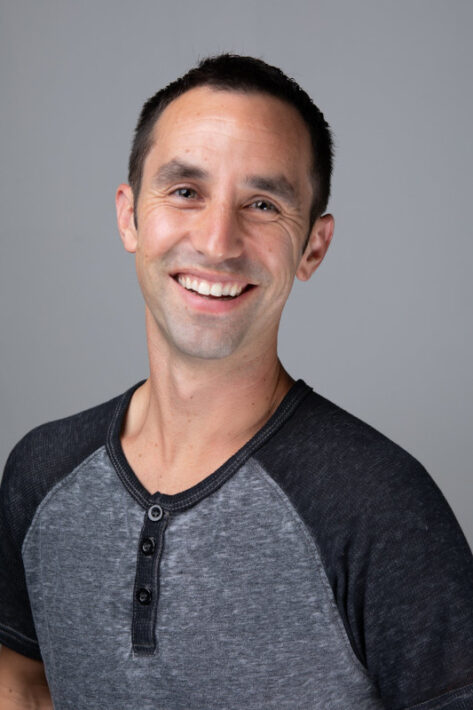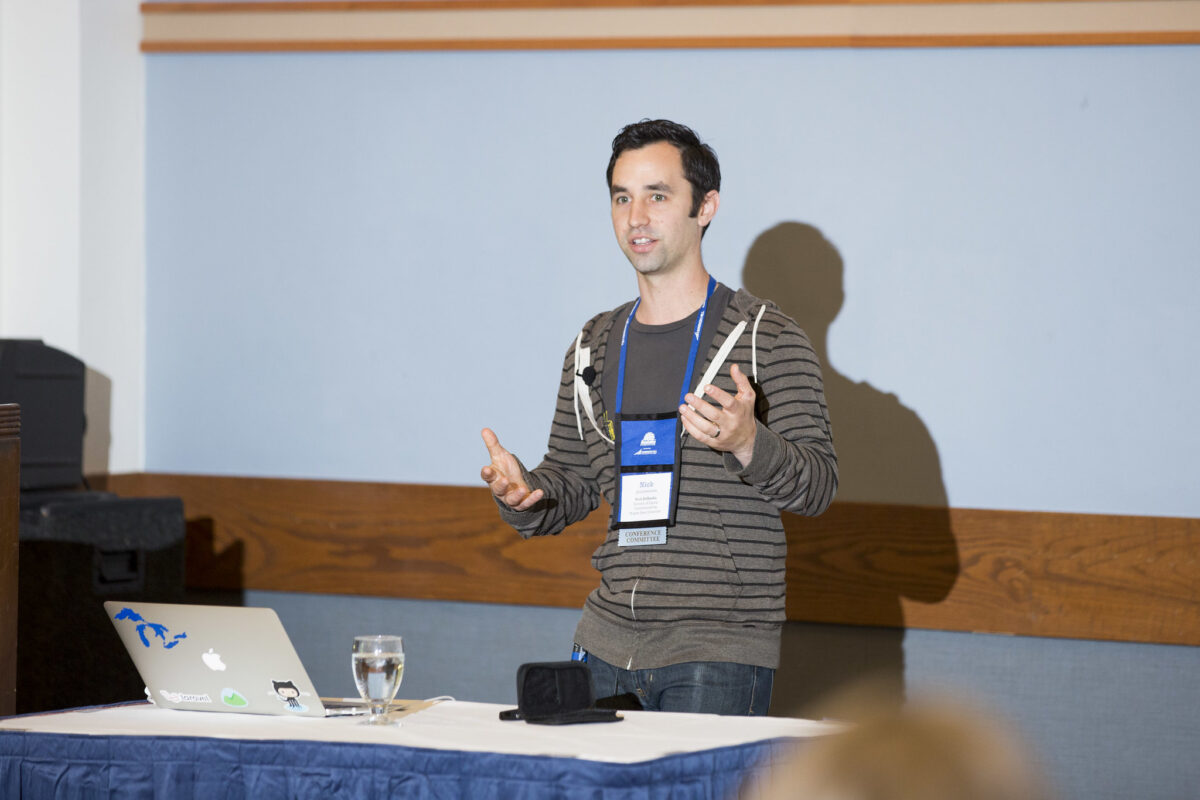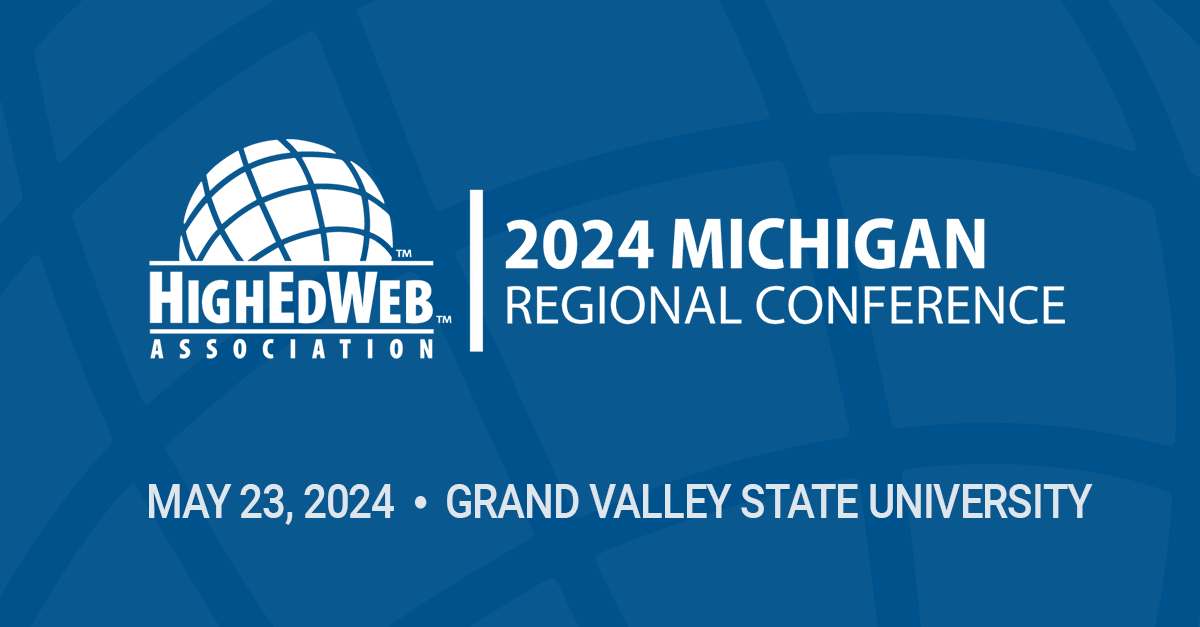To align with Global Accessibility Awareness Day (May 16), long-time HighEdWebber Nick DeNardis created a 30-day accessibility challenge. In the format of an email-based course, each day participants get a text-based email with a single prompt.
We talked to Nick — who oversees digital communications at Wayne State University in Michigan — about the challenge and his overall interest in and advocacy of accessibility.
About Nick
Nick DeNardis has been crafting digital experiences for more than two decades. He serves as senior director of digital communications at Wayne State University and has, for 20+ years, shared his wisdom with others through conference presentations, adjunct teaching, and other professional development courses.

The Background
Before we dive into the course, I asked Nick a few questions about his background and inspiration. Let’s get to it:
DT: You’ve been in higher ed — and the web in general — for a while. Do you recall an Aha! moment where accessibility really came into focus for you and/or was it something that just gradually became part of what you do just by virtue of staying up on the industry?
ND: The Aha! moment happened for me during a Refresh Detroit meetup. Al Puzzuoli was the speaker, and his entire presentation was about how he uses the web with a screen reader. Listening to how fast his screen reader was reading, how he was able to skip around a page, and how he was able to work around sites that didn’t play well with the software.
Al asked us for suggested sites and it was eye-opening how much content we could see on screen which was hidden from the screen reader — he was locked out of the full experience. It was enlightening how many user interface elements were difficult to use or how he was caught in loops. It was clear at that moment, as a web community, we were failing to utilize the medium to its full potential.
DT: Since then, you’ve really continued on your journey to learn more accessibility. You have a few accessibility certifications. Why was taking this step important to you personally and professionally?
ND: The rigor of going through the certification process forced me to go deep on specific topics around digital and physical accessibility. It exposed me to areas outside of my day-to-day responsibilities. I wanted to ensure the advice and direction I was giving was backed by more than personal experience.
The Challenge
Now that we have some background on how Nick became more intentional about his own web endeavors, we’ll dive deeper into his 30-Day Accessibility Challenge — which is designed to help others have their own Aha! Moments.
DT: What inspired you to start this challenge?
ND: Accessibility can be intimidating. Going to the WCAG website, there are pages and pages of technical standards, it is overwhelming. I wanted to create a low barrier-to-entry introduction for people with a single topic and a step-by-step task they could complete in 15 minutes.
I work with a number of content owners who barely have time to keep their content up to date. Without some sort of prompt, accessibility doesn’t make it to the top of their to-do lists.
I modeled the daily email off Ben Orienstein’s code quality challenge which prompted me each morning with a single topic I could focus on and improve a codebase.
DT: So many people can benefit from this, but did you have an ideal user or two in mind when you created the course?
ND: The ideal user is the content owner of a website. Although there are some technical aspects to the topics (which may require a developer to fix), discovering what may be an issue happens completely on the front-end website. It isn’t meant to be a comprehensive guide, but to surface opportunities to make a site 1% better each day.
DT: I love that each day there’s a single topic. Can you give an example or two?
ND: Throughout the month the topics range from the typical things that come to mind when you think about equal access like alternative text, color contrast and page structure. The topics expand to things you may not even know to think about, for example, form timeouts, click target sizes, pointer cancellation, and keyboard traps. Each email contains the rationale, an example and a task.
DT: I also like that you don’t just focus on the web, but also cover apps, and social. Tell me about that choice.
ND: Users expect the same level of accessibility no matter how they interact with your content. Focusing only on the web and ignoring social or email results in a lack of predictability. An end user’s interaction with your content spans the range of social media, email, web, and perhaps apps, the principles behind providing equal access apply to all mediums.
DT: Now that you’re more than a week into the challenge, any feedback or updates on progress?
ND: The first week of topics shed light on alternative ways people consume the content of a webpage. Although I didn’t specifically ask for feedback, I’ve had several people reply to the emails to let me know how it is going and how grateful they are to have the tools provided.
DT: Do you plan to do something like this in the future, either accessibility-related or otherwise?
ND: I’m always looking for an excuse to break down accessibility topics and inspire those ‘Aha!’ moments in others. I’d like to move beyond the text-based 15-minute emails and incorporate video demonstrations of each topic and perhaps in more of an online course format. There are nuances in each topic that could easily fill an hour or more.
DT: OK. Bonus question. While we have you, the Michigan HighEdWeb regional is coming up. Can you tell us a bit about your involvement in that?
ND: I’m speaking at the conference about user experience. The session is “10 Tabs, 10 Homepages: Competing for Attention, Access and User Experience.” The goal of the talk is to help identify strategies to have the experience of our web presence as your visitors do. I like to say, it’s hard to see the label from inside the bottle, but with a few strategies, you’ll be able to look over the rim and see your own site with fresh eyes.
I’m also excited to hear from Lija Hogan, the keynote speaker, who is talking about accessibility and how to incorporate it into a project and with a team. This is the drum I try to beat every day with the work I do, elevating equal access helps everyone.
***
Thanks for doing this challenge, Nick, and for taking the time to answer a few questions.
P.S. While the course is already underway, Nick says late-registrants can still get in on the challenge. If you’re interested, you can sign up here and still get the 30-day series of emails.
He adds that he’d love to hear feedback from participants, such as what worked well and what didn’t — as well as learning about any other tools or processes people are using related to the topics covered in the challenge.


